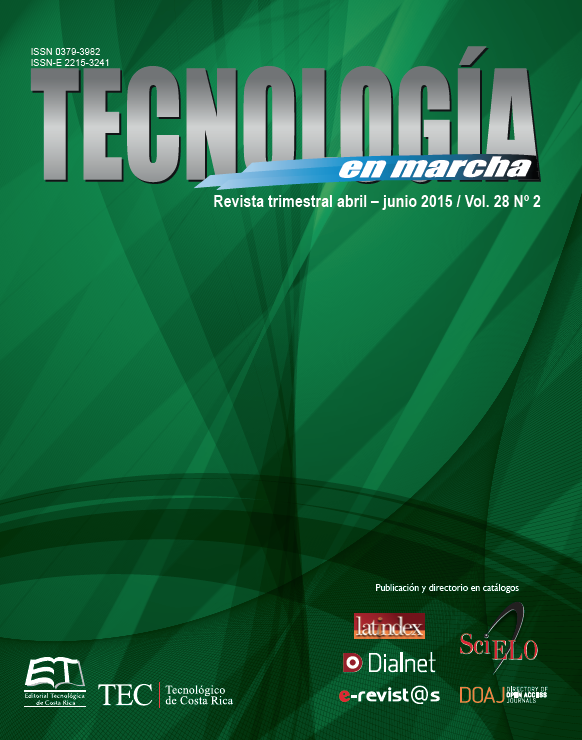Evaluation of inorganic fertilization in cassava crop in the northern region of Costa Rica
Main Article Content
Abstract
The study was done in three farms, two of which are located in the canton of San Carlos, district La Fortuna, in volcanic origin soils with moderate fertility (farm Pepin) and high fertility (farm Sonafluca) and the other in the canton of Los Chiles in ultisols soils of low fertility (farm Laberinto). The objective of this study was to evaluate the effect of methods fertilization on cassava crop, Valencia variety, to obtain for the best alternative in yield and profitability. Four treatments were applied: complete soil fertilization, foliar fertilization only, combination of these two treatments and common fertilization on each farm, using an unrestricted random design with four replications. Fertilizations were made before the five months of age to cover the phases of increased absorption of nutrients. The results obtained in farm Pepin showed p-valor <0,05 in root dry matter at harvest, in first quality cassava and the concentration of some elements in the leaves for the control treatment, this produced the best yield with 16.1 t / ha. In the farm of Sonafluca, the control showed the highest yield with 20.85 t / ha; there were differences in this farm as in Laberinto in dry matter at six months of age. We conclude that the only foliar treatment (commonly used by small producers) is the most economical, while the control (application of fertilizers to soil and leaves according to each producer) was the best yield.
Article Details
Los autores conservan los derechos de autor y ceden a la revista el derecho de la primera publicación y pueda editarlo, reproducirlo, distribuirlo, exhibirlo y comunicarlo en el país y en el extranjero mediante medios impresos y electrónicos. Asimismo, asumen el compromiso sobre cualquier litigio o reclamación relacionada con derechos de propiedad intelectual, exonerando de responsabilidad a la Editorial Tecnológica de Costa Rica. Además, se establece que los autores pueden realizar otros acuerdos contractuales independientes y adicionales para la distribución no exclusiva de la versión del artículo publicado en esta revista (p. ej., incluirlo en un repositorio institucional o publicarlo en un libro) siempre que indiquen claramente que el trabajo se publicó por primera vez en esta revista.

